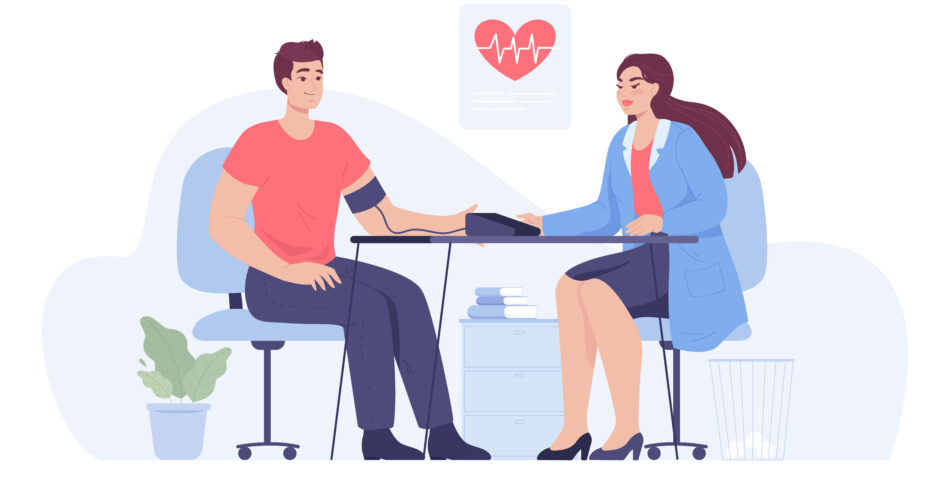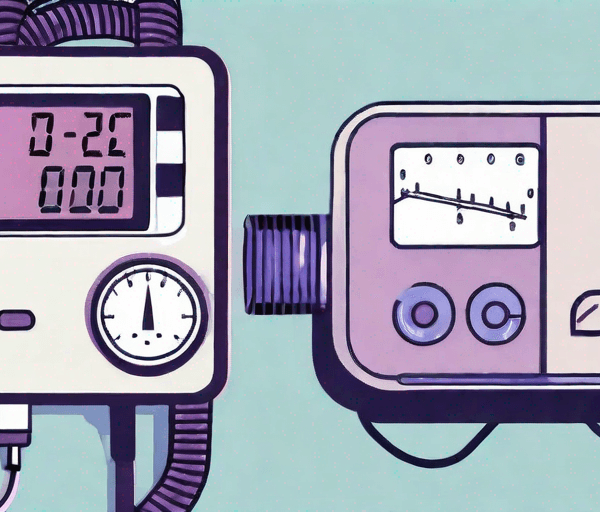Hypertensive urgency and hypertensive crisis are two critical moments for high blood pressure patients. When a patient reaches these health states, there’s a spike in their high blood pressure reading that can be detrimental to their health. That’s why it is vital to know the suitable steps for first aid for high blood pressure.
It is no secret that hypertension is a silent killer that needs to be managed promptly. By mastering the first aid for high blood pressure, patients and their family members can feel at ease, even during those crucial health states. In this blog, we’ll uncover the different methods on how to lower blood pressure, as well as provide key highlights on what to do along the way. Let’s begin!
Understanding High Blood Pressure
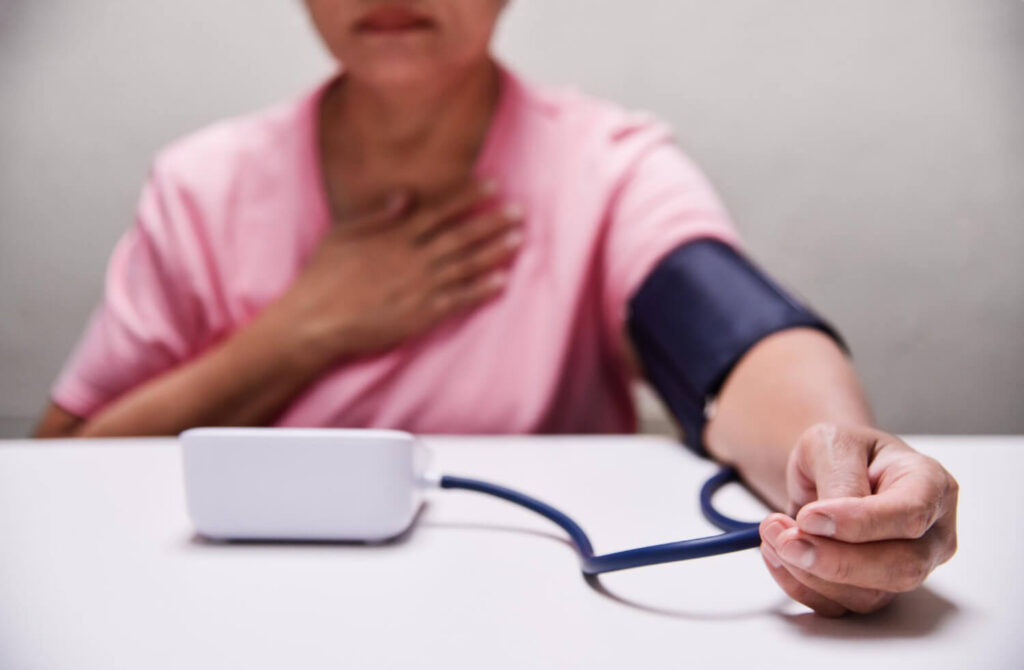
Blood pressure is a measure of the force exerted by the blood against the walls of the blood vessels. It is recorded as two numbers: the systolic pressure over the diastolic pressure. These measurements will help indicate whether the patient is at the normal range or at risk.
Normal measurement is around 110/70 blood pressure or just below 120/80. If the blood pressure reading is above 130/80 mm Hg, it is considered high and may indicate hypertension. When that happens, it is important to perform first aid for high blood pressure to lower down the number.
Take note that high blood pressure can put strain on the heart and blood vessels. It can increase the risk of heart attack, heart failure, stroke, and other serious health conditions. So, it is important to take steps to manage blood pressure and keep it within a healthy range.
What Causes High Blood Pressure?
Several factors can contribute to the development of high blood pressure. That can include the choices in food, lifestyle, and even the environmental factors. Unfortunately, individuals tend to disregard such threats to health. With such bad habits, their happiness will only be short-lived due to the grave consequences from those actions.
Here are some of the known causes of hypertension and how it can conflict with the patient’s health.
Diet & Nutrition
One of the most known causes of high blood pressure is the food that individuals choose to eat. Food items that contain high sodium can lead to an increase in blood pressure. If the patient consumes these foods mostly, it can trigger their health. Consuming too much salt can cause the body to retain water, increasing blood volume and putting extra pressure on the blood vessels.
Lifestyle Choices
On the other hand, lifestyle choices such as sedentary lifestyle is a known contributing factor that can lead to high blood. When the individuals are lacking physical activity, they tend to have weight gain. Unfortunately, carrying excess weight puts added strain on the heart, making it work harder to pump blood. Thus, the risk of high blood pressure occurs.
Environmental Causes
Meanwhile, environmental causes such as the weather can also be a factor to having high blood pressure. For instance, an individual with an existing symptom of hypertension can have an exacerbation of the condition due to high temperature exposure. The heat waves from the sun can make the body work harder as it tries to cool down the body. At the same time, the heart pounds harder, which can result in the occurrence of hypertensive urgency of hypertensive crisis.
Although, do take note that environmental causes like the weather doesn’t directly cause the people to develop hypertension. It only acts as a contributing factor, which can add to the possibility of hypertension exacerbation.
Other Factors
When it comes to the other causes of hypertension, people must not forget about the influence of family history. Patients with parents or relatives with a history of hypertension means a higher risk of developing the condition. Aside from that, underlying medical conditions can also lead into the development of the condition.
For instance, when people have kidney disease, their kidneys can’t function well. Thus, the disruption of blood pressure regulation during the removal of excess fluid and waste from the body. In short, when the kidneys are not functioning properly, blood pressure can rise.
At the same time, heart disease can also be one of the causes of hypertension. If there are clogged arteries, it can result in the heavy pounding of the heart to pump the blood. Thus, increasing the normal blood pressure.
Take note that these causes should be taken seriously by every individual with high risk of developing hypertension. It’s best to monitor one’s condition and identify whether or not there are existing influences around that can trigger hypertension. When that happens, people must know the crucial steps to manage the condition, which a first aid for high blood pressure can provide
First Aid for High Blood Pressure
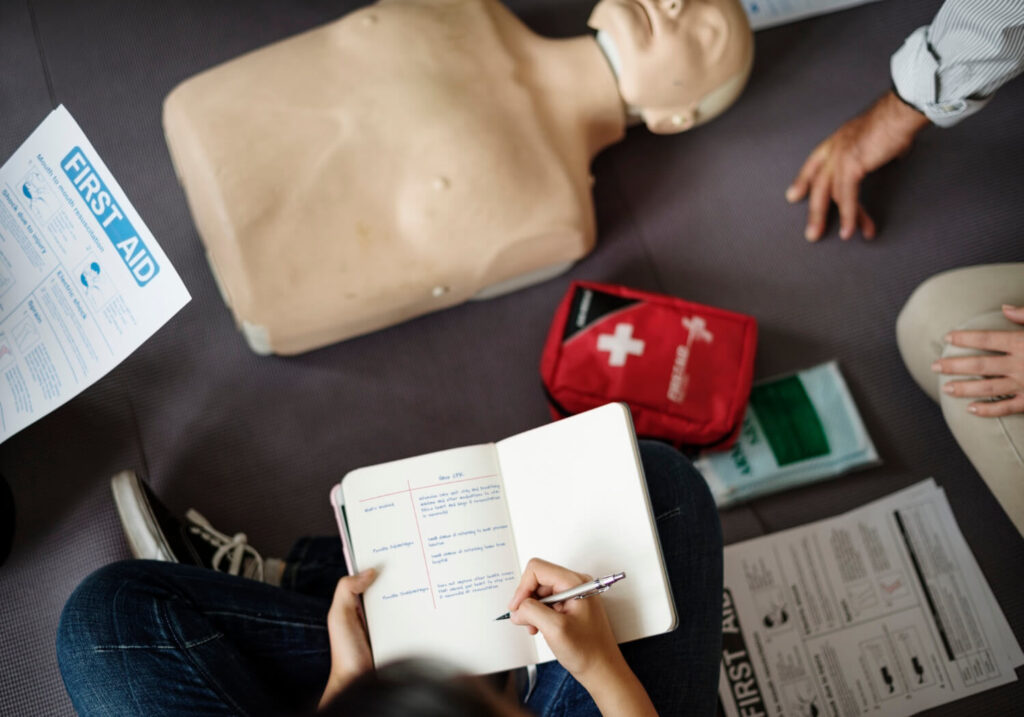
As mentioned, first aid for high blood pressure is crucial to combat high blood pressure, especially when there’s a sudden spike in the blood pressure. That’s why if there are alarming signs or risks present, the first aid for high blood pressure can help alleviate the problem.
Here are some of the possible tips that individuals may utilize as part of their first aid for high blood pressure.
Sit or Lie Down and Calmly Breathe
When experiencing high blood pressure, it is important to sit or lie down in a comfortable position. Taking slow, deep breaths can help promote a sense of calm and relaxation, which can in turn lower the heart rate and reduce blood pressure. By focusing on breathing and allowing the body to relax, individuals can help alleviate the immediate symptoms of high blood pressure.
Loosen Any Tight Clothing
Another simple first aid measure for high blood pressure is to loosen any tight clothing. Restrictive clothing can impede circulation and put additional pressure on the blood vessels. By loosening clothing, individuals can promote better blood flow and enhance comfort. This can help the body relax and reduce hypertension.
Take Anti Hypertensive Medication
Moreover, it is also important to have the needed medications, especially if the patient has been diagnosed with hypertension way before. That way, when a crisis like this happens, the patients can lower their blood pressure with the medicine. However, if the patient is not properly diagnosed yet, it might be a sign to visit an emergency room to get checked up.
When to Seek Medical Attention
While first aid measures can provide temporary relief for high blood pressure, it is important to seek medical attention in certain situations. Warning signs may include the following:
- feeling unwell and dizzy
- throbbing headache
- nausea
- cold sweats
- compromised vision
- breathlessness
These symptoms are just some of the common indications of hypertensive emergencies. If these signs occur, seek medical emergency immediately to avoid further complications.
Visiting An Emergency Room for Hypertensive Urgency and Hypertensive Crisis
During the emergency visit to a health care expert, it is important to explain everything to the doctor. That includes explaining when the attack started, the included symptoms, the occurrence duration, performed first aid measures, and other crucial events that happened. At the same time, it is also important to share with the doctor the current medications, especially if these medications are for maintenance. Doing so, allows the doctor to understand what happened fully, and the possible next plan to take.
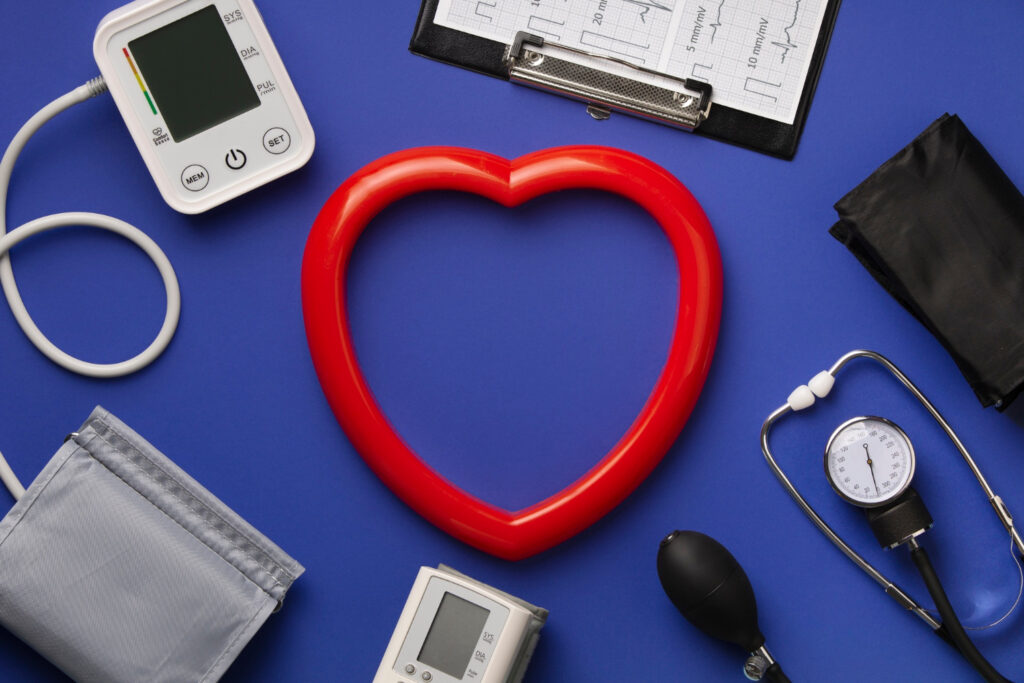
Take note that additional tests will occur, especially if the doctor wants to check the current health state of the patient. Some of the tests that may occur are as follows:
- CBC or blood chem test
- urinalysis
- electrocardiogram or ECG
These tests will help indicate the level of cholesterol, sodium, and others. If the tests showed an abnormal amount, the doctor will curate a treatment plan to address the condition and to lower the blood pressure. Usually, after a few hours, the patient can go home to rest and to use the prescribed medications.
Monitoring Your Blood Pressure at Home
After the health check up, it is important to still monitor the condition despite being at home. Doing so allows the patient to see sudden changes, and see whether or not it can pose a threat to their health.
To monitor blood pressure at home, it is important to invest in a reliable blood pressure monitor. There are various types available, including manual and digital monitors. It is
Take note that consistency is key when monitoring blood pressure at home. By maintaining a regular schedule and recording the readings, individuals can track their progress and make necessary adjustments when needed.
Frequently Asked Questions
Can drinking water lower my blood pressure?
While drinking water is crucial for hydration, it might not be a crucial aspect for first aid for high blood pressure. Furthermore, excessive water intake may lead to imbalances in sodium levels. However, staying hydrated can promote healthy blood volume and support heart health. It is important to note that It is best to consult with a healthcare professional for personalized guidance on hydration and blood pressure management.
How quickly can I lower my blood pressure?
Lowering blood pressure is a gradual process that requires long-term lifestyle changes. While certain dietary approaches, such as reducing sodium intake, can have immediate effects on blood pressure, maintaining a healthy lifestyle is key for long-term blood pressure management. Furthermore, regular exercise, a balanced diet, and stress management can all contribute to lower blood pressure and overall health benefits. It is important to consult with a healthcare professional for personalized guidance on blood pressure management.
Conclusion
The threat of high blood pressure can be daunting, especially if the patients are not prepared enough to manage hypertensive crises and hypertensive urgency. In that case, patients can try and begin their journey with the list of first aid for high blood pressure in this blog.
Take note that one’s health is crucial to manage, especially with the existing threats. That’s why the best way to prevent long term health consequences is to prepare. Learn more about how to manage hypertension today!
